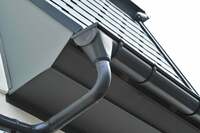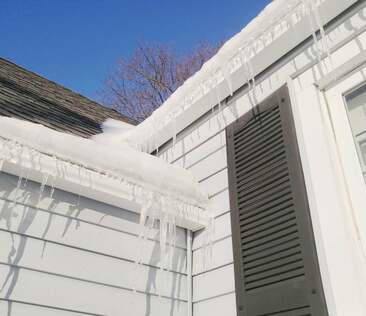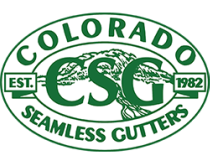
Did you know that rain can fall as fast as 20 miles per hour? Large amounts of rain can also be an issue for your home. Too much and you can easily have flooding, which can overwhelm the drainage systems.
Fortunately, our homes have something that protects us from rainfall - the gutters . Ultimately, their job is to divert water off the roof and away from the house.
If anything, they are a vital part of the roofing system. As such, it only makes sense that you'd want to maintain the gutters on a regular basis. In fact, everyone should be doing summer gutter maintenance. Want to know why? If so, be sure to keep reading!
Fortunately, our homes have something that protects us from rainfall - the gutters . Ultimately, their job is to divert water off the roof and away from the house.
If anything, they are a vital part of the roofing system. As such, it only makes sense that you'd want to maintain the gutters on a regular basis. In fact, everyone should be doing summer gutter maintenance. Want to know why? If so, be sure to keep reading!
0 Comments
Repairing a gutter system takes a lot of work that no amount of duct tape could fix. Depending on the extent of the damage, entire gutter systems may need to be replaced. Other times, the problem can be fixed by resealing or re-securing the gutter. In any case, the first step to solving your gutter problem is figuring out what the problem is in the first place.
Signs That Your Gutter Needs Fixing
Signs That Your Gutter Needs Fixing
Tips On Installing New Gutters
Have you heard that old saying 'when it rains it pours'?
What's the one, often overlooked feature of our home that takes the most punishment when the rain comes? You guessed it—the gutters.
There are some pretty clear signs that your gutters need replacing, and gutter installation can be a pain. If you're installing gutters, you want to make sure you do it right.
We've got everything you need to know right here in our simple step-by-step guide.
What's the one, often overlooked feature of our home that takes the most punishment when the rain comes? You guessed it—the gutters.
There are some pretty clear signs that your gutters need replacing, and gutter installation can be a pain. If you're installing gutters, you want to make sure you do it right.
We've got everything you need to know right here in our simple step-by-step guide.

The gutter market is huge. However, the materials gutters are made of are actually quite slim. Metal gutters make up a third of the gutter world, as there are only three options: wood, metal, and vinyl.
They are one of the most popular because they can be easily cut, handled, and hung for a great price.
You know metal gutters are in your future, but which one is right for you? The two main gutters we will compare today are steel vs. aluminum gutters and the pros and cons of each.
Stay tuned to help make your decision a breeze!
They are one of the most popular because they can be easily cut, handled, and hung for a great price.
You know metal gutters are in your future, but which one is right for you? The two main gutters we will compare today are steel vs. aluminum gutters and the pros and cons of each.
Stay tuned to help make your decision a breeze!

If you live Denver Colorado, it's likely you've heard the term "ice dam." Most people know they are something you don't want. However, it seems a lot of people's understanding of ice dams stops there.
So what are ice dams, exactly? Can they damage your home? Are they preventable? To help you understand ice dams and ice dam roof damage, we've put together this helpful article.
What Is an Ice Dam?
Ice dams are bulges of ice that form along the edges of a roof in winter. As snow settles on the roof, warm air from inside the home escapes through the attic and partially melts the snow. As the snow warms and melts, water drains towards the eaves and gutters.
The eaves of a roof generally extend past the exterior walls of the home, meaning they don't get any of that escaping warm air. As the melted snow hits the cold eaves, it freezes. Clogged gutters and downspouts exacerbate the problem, as melting water has no place to drain.
As winter progresses, the ice accumulating on the eaves builds up, creating large bulges along the edge of the roof. As the ice builds up, it eventually gets large and deep enough to trap water behind it -- hence the name "ice dam."
So what are ice dams, exactly? Can they damage your home? Are they preventable? To help you understand ice dams and ice dam roof damage, we've put together this helpful article.
What Is an Ice Dam?
Ice dams are bulges of ice that form along the edges of a roof in winter. As snow settles on the roof, warm air from inside the home escapes through the attic and partially melts the snow. As the snow warms and melts, water drains towards the eaves and gutters.
The eaves of a roof generally extend past the exterior walls of the home, meaning they don't get any of that escaping warm air. As the melted snow hits the cold eaves, it freezes. Clogged gutters and downspouts exacerbate the problem, as melting water has no place to drain.
As winter progresses, the ice accumulating on the eaves builds up, creating large bulges along the edge of the roof. As the ice builds up, it eventually gets large and deep enough to trap water behind it -- hence the name "ice dam."



